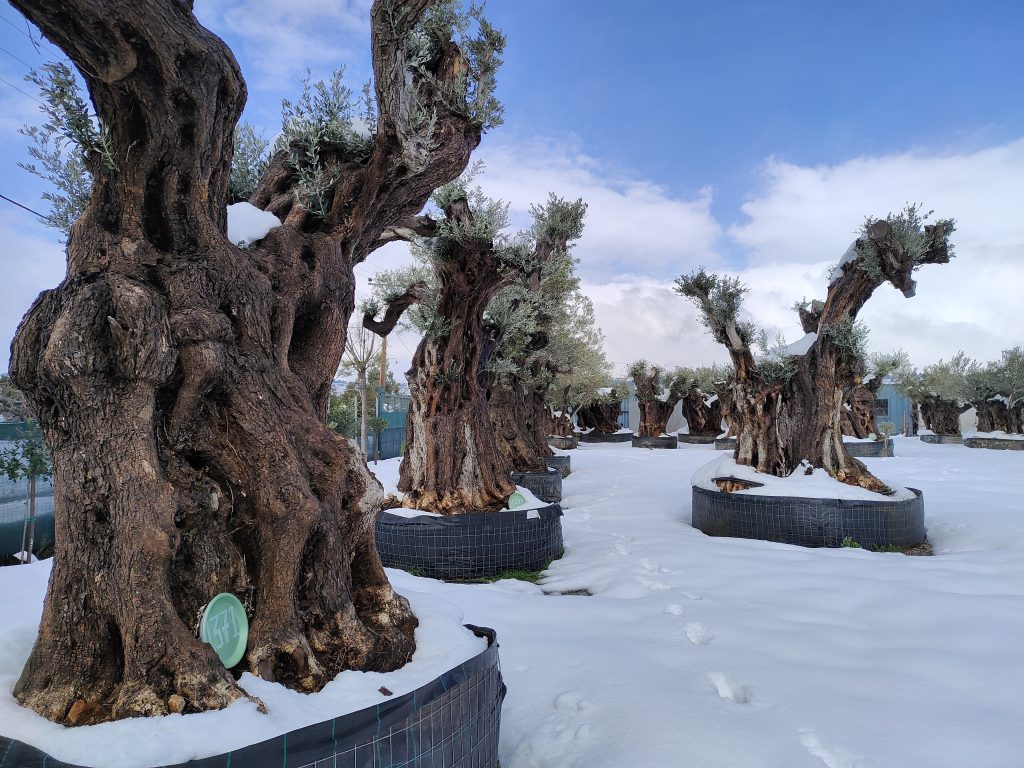The relationship between olive trees and cold
It is well known that all olive tree varieties love heat, which is why they thrive in the temperate and subtropical zones. But what about the cold and which varieties are the most resistant to it?
And yet, cold is beneficial for an olive tree. Of course, when we talk about needing cold, we should not overdo it. In areas where the temperature drops below -7 degrees Celsius, for example, it is not recommended to grow an olive tree, as it will damage shoots and stems.
In particular, it takes about 1,500 to 2,000 hours (about 10 weeks) below 16 degrees Celsius. This is in order to meet the needs of earinization, the process of differentiating its buds so that it can flower. This is also the reason why an olive tree near the equator, where the climate is very hot and usually above 20 degrees Celsius, cannot produce fruit, only shoots.
In Greece, the olive tree thrives in all geographical areas, despite the wide variations in temperature. However, not all varieties have the same resistance to cold.
Very cold-resistant varieties
-
- They are followed by Tsounati or Mastoidis (altitude up to 1000m), Kothreiki or Manaki (altitude up to 800m) and Agouromanako (altitude up to 650m).
-
- While the Megaron, Lianolia of Corfu and Valanolia or Kolovi are also quite resistant.
-
- Of course, some foreign varieties cultivated in our country, such as Picual, Leccino, Tanche and Arbequina, could not be missing.
Non-cold-resistant varieties
On the contrary, in cold climates and at high altitudes, varieties such as Amygdalolia, Aetonychi, Aegean Throubolia and native Cyprus varieties will suffer great damage. Next, Koroneiki, Kalamon and Amphisis which also bear little resistance to cold.
Effects on olive trees from the cold
Excessive cold or even severe cold, which often occurs in Greece, significantly weakens the trees or even destroys them. When the vegetation has not had time to harden off, due to the high temperatures for the season, there are signs of damage to the leaves and shoots.
However, if the cold is relatively mild and does not drop far below freezing, the fruits will simply shrink temporarily and then return to their normal shape.
It is also important to note that very old olive trees are much less at risk than young ones. This is due to its very strong root system, as even in moderate to heavy frosts (not below -12 °C), even if a large part of the root system is damaged above ground, the root will regrow.

Variety of Megara in ancient olive trees in Nurseries Delta Trees
Precautions on very cold days
Choosing the right variety is one of the most important factors for the successful growth of an olive tree. However, we can always help protect our trees from the cold.
1) Move young seedlings to sheltered areas away from strong winds (ideally south-facing).
2) Cover our plants with windproof-anti-frost netting or fabrics obtained from agricultural stores. Be careful not to over-tighten, as we may injure our trees.
3) Also important for the health of our trees is proper fertilization. In winter we avoid fertilizing, especially with nitrogen.
4) Still, avoid pruning before frost, as new growth is encouraged in winter, which is undesirable. Of course, it depends on the area, but it would be advisable, even with the frost over, not to prune before April, so that the damage can be seen in its full extent. This will avoid hasty moves that will only harm our trees.
5) Strengthen the soil with well-digested manure around the roots of the plants, as this will warm the soil and at the same time improve its structure.

